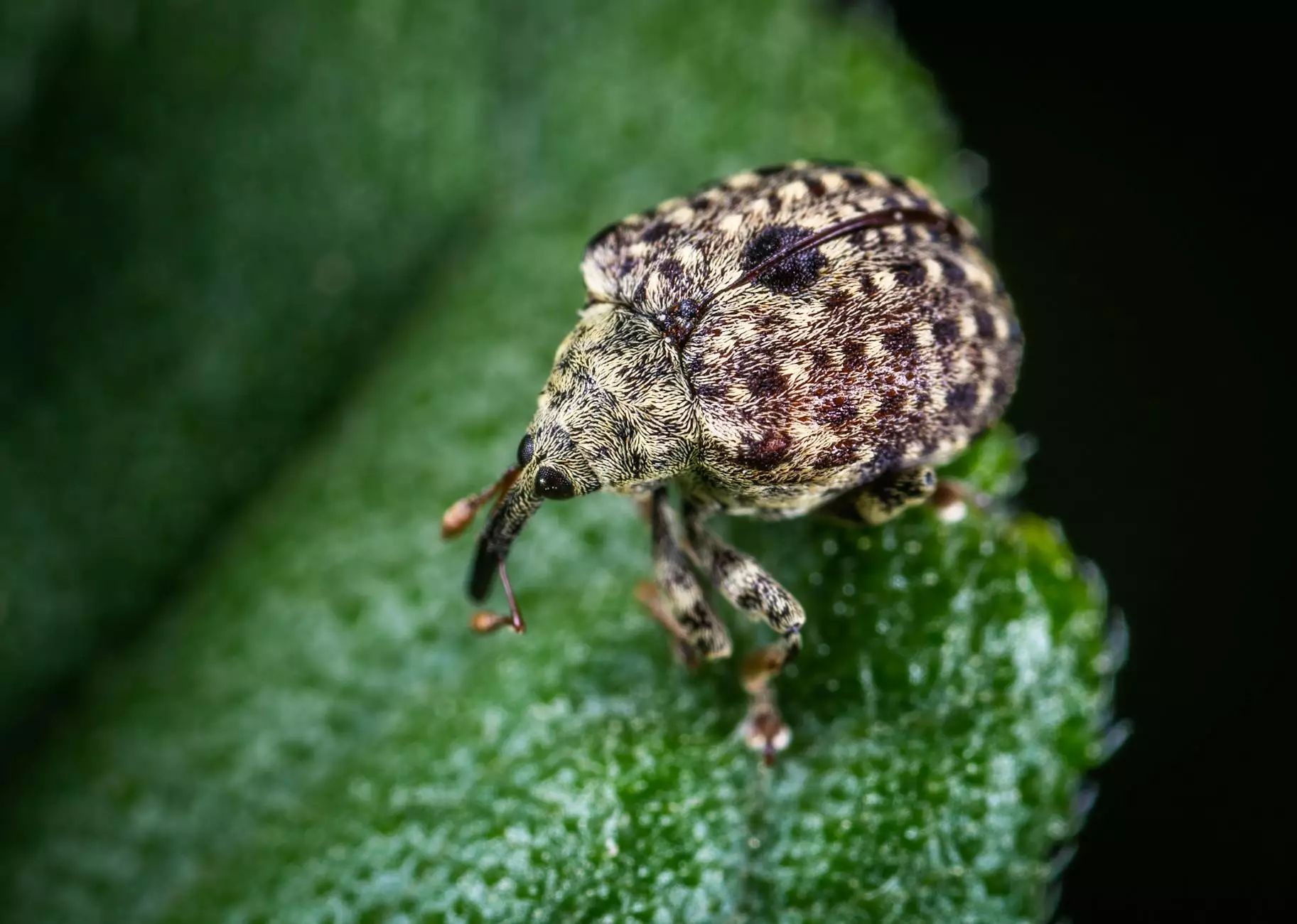Effective Rice Weevil Control: Strategies for Farmers

The agricultural sector faces numerous challenges, one of which is the persistent threat of pests. Among these, the rice weevil (Sitophilus oryzae) poses a significant risk to rice crops and stored grains. For farmers and agricultural businesses looking to safeguard their harvest, mastering effective rice weevil control is imperative. This article delves into comprehensive strategies, preventative measures, and actionable steps to combat these pests effectively.
Understanding the Rice Weevil
The rice weevil is a small, dark brown beetle that infests grains such as rice, corn, wheat, and barley. With a typical size of 2.5 to 4 mm, these pests are often barely noticeable but can cause extensive damage. Understanding their lifecycle and behavior is crucial for effective rice weevil control.
Lifecycle of the Rice Weevil
The lifecycle of the rice weevil consists of four main stages: egg, larva, pupa, and adult. The female weevil can lay up to 400 eggs, usually on the surface of grains. Once the eggs hatch, the larvae burrow into the grains, leading to significant spoilage. Consequently, interrupting this lifecycle is essential for effective management.
Impact on Agriculture
Rice weevils are not merely a nuisance; they can lead to substantial economic losses. Infestation can cause:
- Decreased Crop Yield: Infested grains lose their market value.
- Quality Degradation: The quality and storage life of grains are compromised.
- Increased Costs: Managing infestations require additional resources and expenses.
Preventive Measures for Rice Weevil Control
Prevention is the cornerstone of effective rice weevil control. Implementing proactive strategies can significantly reduce the risk of infestations:
Proper Storage Practices
Ensuring that grains are stored correctly is fundamental in deterring rice weevils:
- Store grains in airtight containers to restrict moisture and access.
- Keep storage areas clean and free from organic matter that can attract pests.
- Regularly check for signs of live weevils or damage.
Routine Monitoring and Inspection
Conducting regular checks in storage facilities can catch infestations early:
- Use pheromone traps to monitor weevil populations.
- Inspect bulk grain before purchase to ensure it is pest-free.
- Document findings for ongoing assessment of pest control effectiveness.
Implementing Effective Control Strategies
Once an infestation is detected, it’s vital to act swiftly. Here are crucial strategies for rice weevil control:
Cultural Control Methods
Cultural practices involve altering farming methods to deter pest populations:
- Rotate crops annually to disrupt pest lifecycles.
- Use pest-resistant crop varieties when available.
- Implement timely harvesting to minimize the time grains are vulnerable.
Biological Control Options
Utilizing natural predators can provide a sustainable control method:
- Introduce beneficial insects like *Trichogramma* wasps to combat weevil populations.
- Consider using nematodes, which are effective at controlling larvae stages.
Chemical Controls
When infestations are severe, chemical treatments may be necessary:
- Insecticides specifically formulated for weevils can be applied, though it's essential to follow recommended safety guidelines.
- Fumigation of storage areas may be effective but should be done by professionals to ensure safety.
Long-term Strategies for Rice Weevil Management
To maintain an effective rice weevil control program, farmers should create a structured long-term strategy:
Education and Training
Knowledge is power. Training staff about pest identification and management can lead to proactive interventions:
- Conduct workshops on the lifecycle of weevils.
- Implement an Integrated Pest Management (IPM) approach that combines various control methods.
- Encourage farmers to share knowledge and resources on pest control.
Invest in Technology
Leverage technological advancements to enhance pest management:
- Utilize monitoring software to keep track of pest populations and the effectiveness of control measures.
- Explore drone technology for aerial surveillance of large fields.
- Incorporate sensor technology that detects moisture levels in storage areas to prevent infestations.
The Role of Farm Equipment in Pest Control
At TSGC Inc., our focus on farm equipment repair and farming equipment is vital in supporting farmers in their pest management efforts:
Maintain Equipment Efficiency
Regular maintenance of farming equipment ensures efficiency, enabling farmers to implement pest control measures effectively:
- Ensure that all machinery is clean and free from organic residue that can harbor pests.
- Use well-maintained equipment for timely field and storage interventions, maximizing their effectiveness against weevil infestations.
Invest in Pest Control Equipment
Investing in specialized equipment can enhance your pest management capabilities:
- Consider purchasing grain handling equipment designed to reduce contamination.
- Look into advanced storage solutions that limit pest access and potential infestations.
Conclusion
In conclusion, rice weevil control is a crucial aspect of agricultural operations that can significantly affect both yield and profit. By understanding the nature of these pests and implementing effective control measures—including prevention, cultural practices, and technology—farmers can protect their investments and ensure healthy harvests. At TSGC Inc., we are committed to providing the necessary support and resources, including expert farm equipment repair and maintenance services, to help you combat rice weevils and other agricultural challenges effectively. Stay proactive, comprehensively manage your pest control strategies, and maintain the quality of your crops for optimal success in the agricultural industry.









